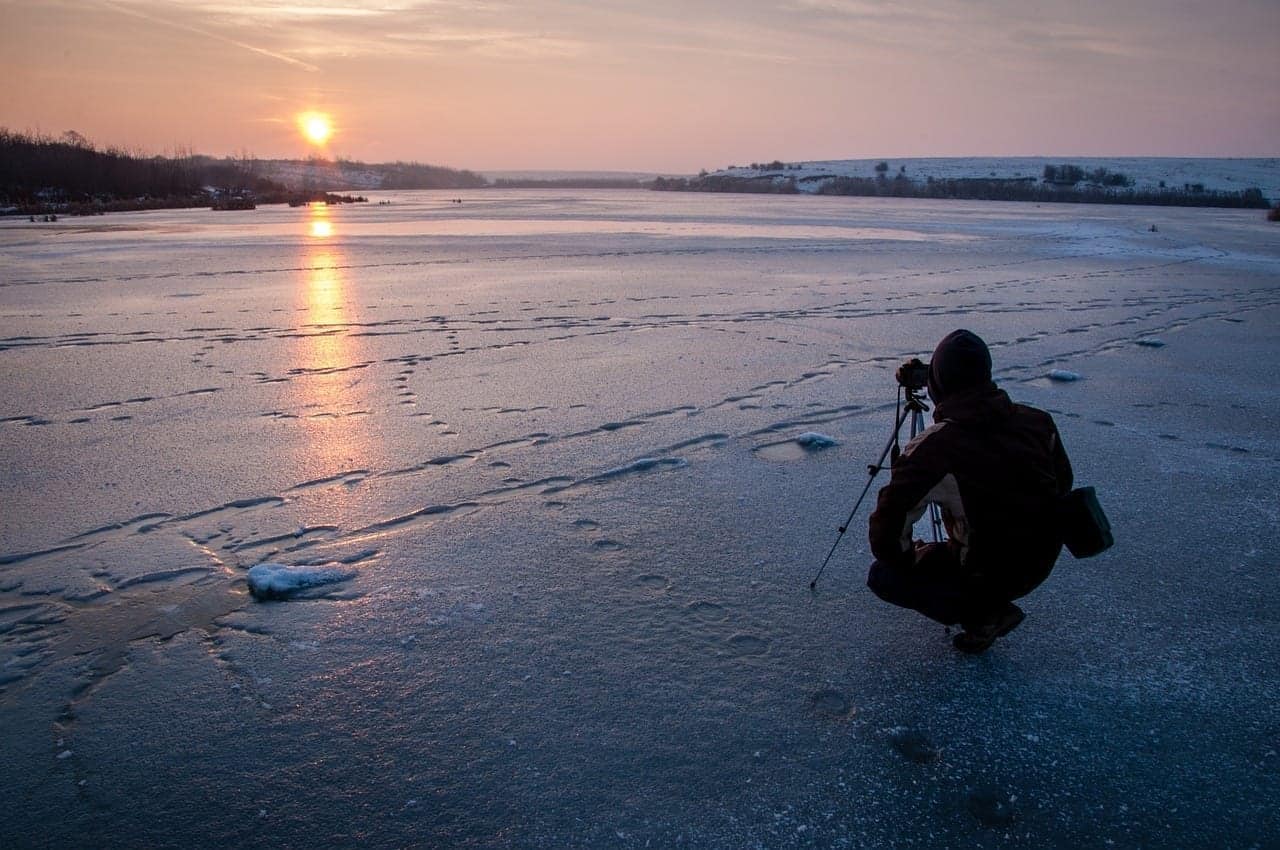So far, 2019 has brought some extreme weather to the Greater Toronto Area, including a polar vortex. A snowfall record was set in late January. February recorded the first snow day since 2011, closing schools, universities, and colleges. All this got us thinking about how extreme weather affects video shoots.
Cold Weather
Cold weather is unpleasant for cameras and camera operators alike. Sometimes the boundaries of good judgment are pushed because of the idea that the show must go on. When the movie The Revenant was shooting in the wilds of Alberta, the director finally halted production when the temperature dropped to -40C. Camera equipment was locking up and the cast and crew faced the real dangers of hypothermia and frostbite. It’s hard to make your hands work in sub-zero temps. Our shooters like to use thin, touchscreen gloves covered by bigger mittens when it’s really cold and we’re shooting outside.
Batteries are the first casualty when it comes to shooting in cold weather. Extreme cold shortens battery life, which you may have experienced with your cell phone in winter. The chemical reactions necessary to operate batteries slow down when the temperature drops and a battery can fail to operate without warning. The solution is to keep your batteries as warm as possible until you’re ready to use them. You can also wrap a camera in a coat or other insulation while it’s being used. Finally, let batteries warm up before recharging. Charging a cold battery can prevent it from fully juicing up and ultimately shorten its life.
Extreme weather shooting in the cold can also cause a camera malfunction. The LCD display is at risk for becoming slow and sluggish, making your shot look blurry. Although the recorded footage may be just fine, it’s hard to shoot when you’re not sure what you’re capturing. The camera itself may also fail to operate properly. Your best bet is to leave the camera powered up between shots and even consider keeping the camera in a colder environment over a lunch break. Moving it from the cold to a warm room, and back again, can be jarring to the electronics.
Hot Weather
Hot climates call for extra care when it comes to extreme weather shooting. Two members of the Key West Video team are former cruise ship employees who understand what happens to video camera equipment in hot, humid locations. One would regularly warm her camera with a hair dryer before taking it from the air-conditioned ship into the sultry Caribbean air. Going from the cold, dry air inside to the hot, humid air of the tropics can shock to the electronics. Condensation can be a real issue in this situation—more on that below. It’s also a good idea to keep your camera out of the sun as much as possible by staying in the shade or using an umbrella.
Condensation
Moving from hot to cold climates or vice-versa can cause condensation in a camera. Condensation inside a camera is no good since water and electronics are a bad combination. When shooting in cold weather, a camera can be placed in a large plastic bag before being taken into a warm space. The condensation will collect on the outside of the bag and the camera can be removed once it’s warmed up. Heating up a cold camera before taking it outside (see above) can save you time and frustration.
Rain
Rain, rain go away! It’s a song we sing when we have a shoot scheduled and the clouds aren’t cooperating. Dealing with extreme weather shooting is all about being flexible. We had a summer shoot scheduled with the City of Vaughan and rainy weather had us replacing some of our planned outdoor shots with indoor alternatives. By the end of the day, the rain cleared and we were able to get a few shots outside. We think the video turned out pretty great, and so did the client.
Not only does the camera hate rain, but good audio can be very difficult to capture during a cloudburst. The sound of rain can compete with dialogue and it can be hard to mask. If you have no choice but to shoot in the rain, you may need to do some ADR work in post-production.
Extreme Weather Shooting for Drones
Drones can be touchy in the best of weather, but extreme weather shooting with a drone is nearly impossible. Wind can make a drone hard to control, which will quickly drain batteries. Flying in cold weather will cut battery life short, too. Exposing a drone to rain can damage electronics, and hot weather is inhospitable since a drone already produces a lot of its own heat.
Sunny Skies Ahead
Our shooters and producers are pretty good at thinking on their feet—it’s part of the job. When faced with extreme weather shooting, we look for shelter, use equipment covers, and improvise. The goal is to protect our gear, ourselves, and any on-camera talent without interrupting production.
At a shoot, we’re in charge. People will follow our lead if we react with confidence and a plan. We prepare by checking the weather ahead of time and acting accordingly. Sometimes things need to be rescheduled and sometimes a production can roll with the punches and weather the storm. Call us today for a free quote on your next video and the forecast will be for success.









